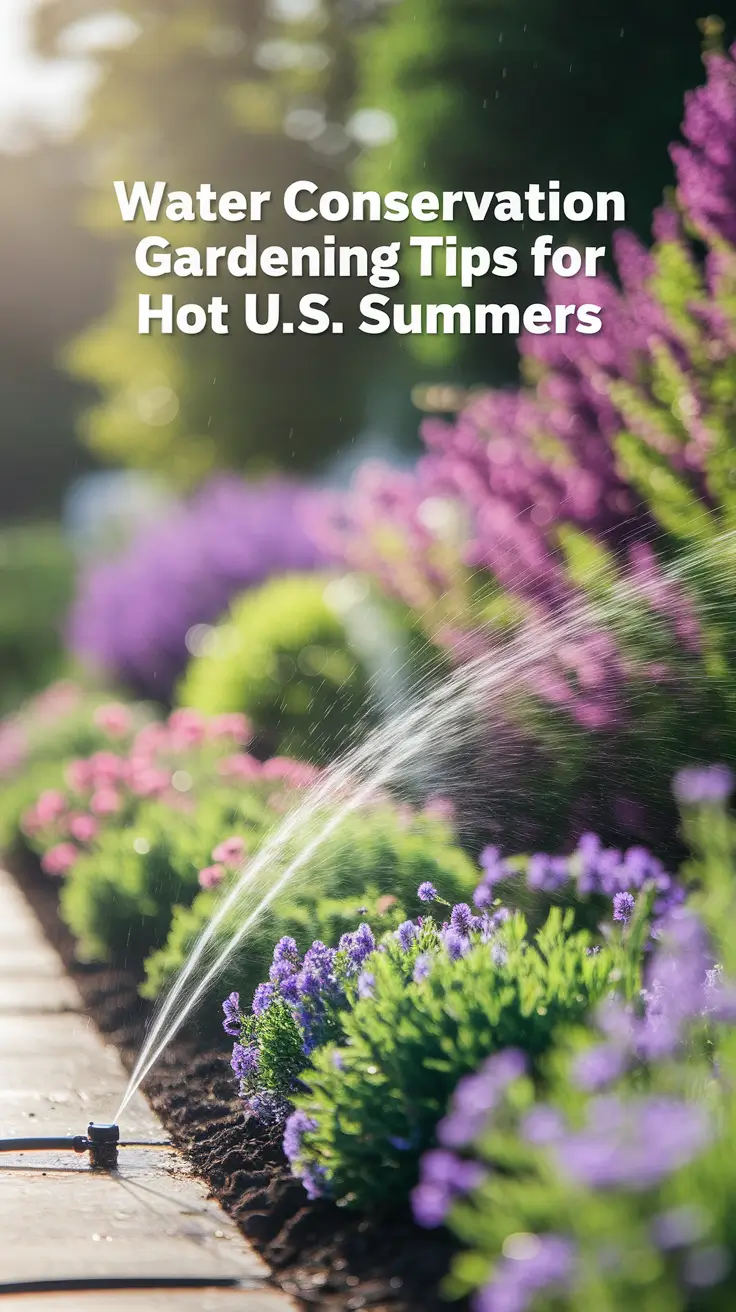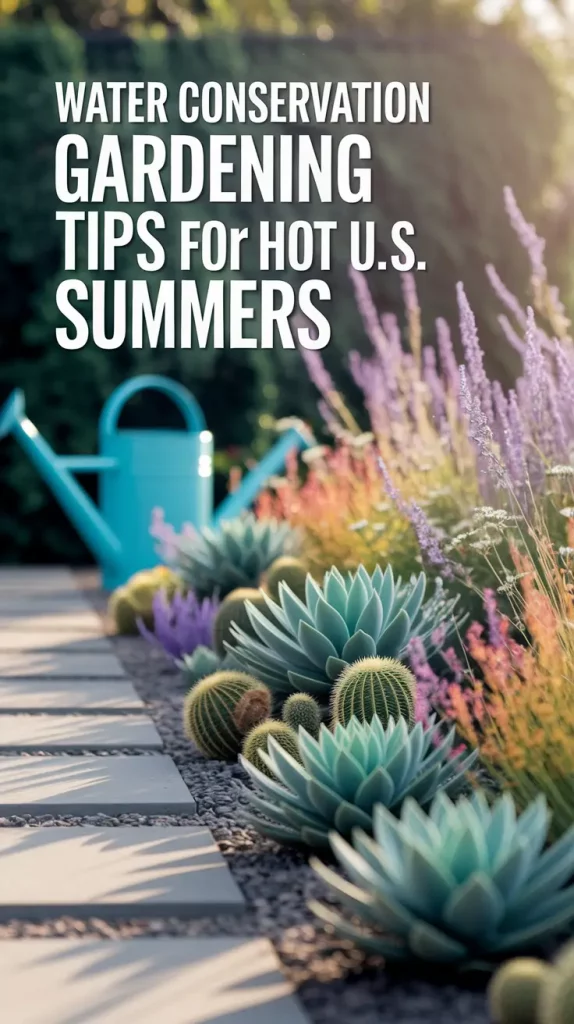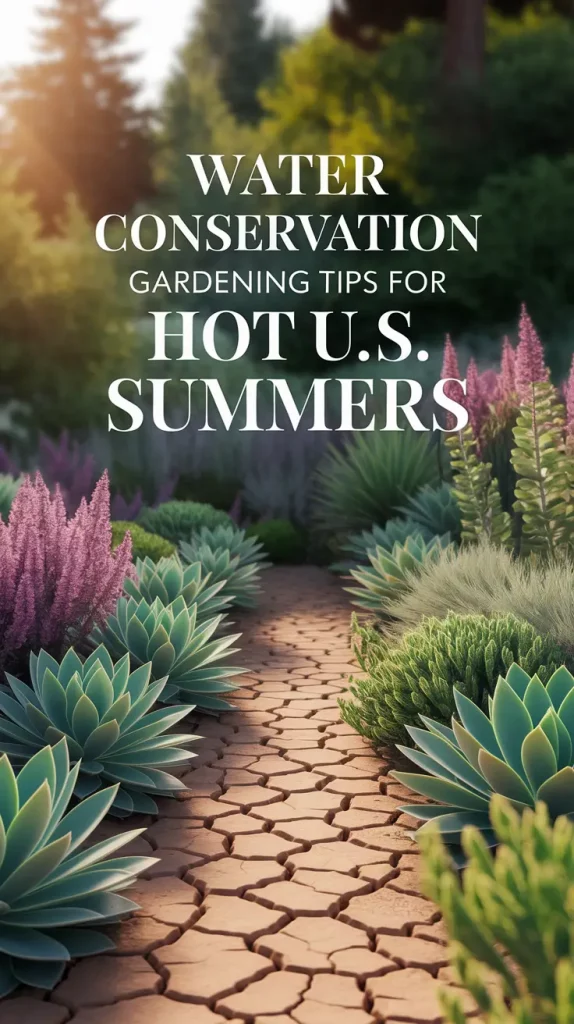Water Conservation Gardening Tips for Hot U.S. Summers 2025: What Actually Worked for My Garden

Have you ever noticed while using the garden faucet that much of the water is being wasted? That used to be me every summer. Having to deal with the sun, dry land and the worry over the water bill was too much for me. But then, I started making small changes.
If you’re in the same boat, constantly wondering how to keep your garden alive without draining your wallet (or the planet’s water supply), I get it. I’ll explain some simple gardening tips that have helped me conserve water in my garden and that you can try as well.

Explaining the Reason: Why Saving Water in the Garden is Important
I realized the importance of saving water in my garden only after the heatwave in 2020. After many months of hot weather, I realized I was watering my plants too much and causing harm to my garden. It was obvious: since summers were becoming hotter and drier, I had to find new ways to garden.
The truth is, many of us overwater or apply water inefficiently — and it’s not just bad for the environment, it’s bad for our plants too. If a garden gets too much water, the roots may rot and if watering is not regular, the plants may suffer. So, where do we start?
How Mulch is the Secret Weapon in My Garden
Here’s the part I didn’t expect — mulch. When I first read about it, I was skeptical. “Why does it matter if some leaves are dropped on the ground?” Still, I decided to try it and the results were amazing.
Why mulch works:
Mulch prevents water from evaporating from the soil. It also helps to cool the soil around the roots. But the real magic? Because of this, I don’t have to use water to control weeds. I didn’t have to worry about watering my garden every single day for it to stay alive.
Watering the Right Way: A Way to Save Water and Keep Your Plants Alive
At first, I thought I would dislike it, but I ended up with a drip irrigation system. When my neighbor suggested it, I was hesitant. I imagined a complicated setup and a big mess. However, I found a simple way that had a huge impact.
What I learned about drip irrigation:
Drip irrigation ensures that water reaches the roots of your plants. It works better than sprinklers, as no water is wasted due to wind or evaporation. At the beginning, I felt I was making it too complicated, but once I finished, I saw how much easier it was to water my plants. I saved water, my garden thrived and it looked better than before.
The Right Plants Make All the Difference
This is where it all shifted. I always wanted a green garden, but I learned that it could look different each year. I decided to grow plants that liked hot, dry weather and the outcome was amazing.
Plants that thrive in hot, dry conditions:
- Lavender is a fragrant plant that needs little water after it is established.
- Cacti and Succulents: Since they keep water in their leaves, they are great choices for dry weather.
- Sedum is a tough plant that requires little water and is available in many lovely colors.
Pro Tip: Choose native plants whenever possible. They have adapted to your climate and usually require less water. As a result, I used less water and introduced many different textures to my garden.

How to Water: Timing Is Everything
Many people often water their plants at the wrong time. I discovered that the best time to water your garden is when it’s either very early or very late. Since water evaporates faster in the hottest time of the day, your plants do not get enough hydration.
Why timing matters:
Watering your plants in the morning prevents much of the water from evaporating and helps them absorb the moisture before it gets too hot. When you water in the evening, the plants will have enough water to last through the hot day ahead.
Smart Soil: The Foundation of Water Conservation
The soil in your garden could be the difference between using too much water and conserving it. After switching to soil that held water well, I saw that the water lasted for much longer.
What I did to improve my soil:
- I used compost to improve the soil which allows it to hold more water.
- I also included coconut coir and peat moss, as they keep the soil moist for a longer period.
Conclusion: Since my soil retains moisture for a longer time, I have to water less. Moreover, the plants’ roots are firmer and they can get more needed nutrients.
Here are the 3 Steps I Followed to Reduce How Much Water I Waste in the Garden
Let me quickly run through the steps that helped me save the most water in my garden:
- Apply mulch all around your plants to prevent water from evaporating and to keep the soil cool.
- A drip irrigation system will help nourish your plants’ roots and prevent wasting water.
- Opt for plants that can withstand drought, as this will help you use less water.
I didn’t think such simple actions would save me so much water, but they really did. Now, I am less concerned about my water bill and can spend more time in the garden.
What to Consider When Choosing a Water Conservation Strategy
There’s no one-size-fits-all when it comes to water conservation. You should decide on the best techniques to use in your garden. I kept a few things in mind when figuring out what would be best for me:
Things to keep in mind:
- Depending on your local climate, you may need to use different methods in the garden.
- Depending on the size of your garden, you may need a more advanced irrigation system or just a few simple adjustments.
- The plants you are growing: Ensure your watering system provides the right amount of water for them.
Table: Comparison of Water Conservation Techniques
| Technique | Benefits | Best For |
|---|---|---|
| Drip Irrigation | Efficient, direct water to roots | Small to large gardens |
| Mulching | Retains moisture, cools soil | All garden types |
| Drought-Tolerant Plants | Low water needs | Hot, dry climates |
| Smart Soil Care | Improves moisture retention | All types of soil |
Conclusion: Small Changes, Big Impact
I didn’t expect that just a few changes could save so much water in my garden. Using the right methods such as mulch and drip irrigation, I’ve managed to grow a healthy garden, even when it’s very hot outside.
What is one thing you’ve done that had a big impact on your garden? Pin this if you’re planning your next garden upgrade!

